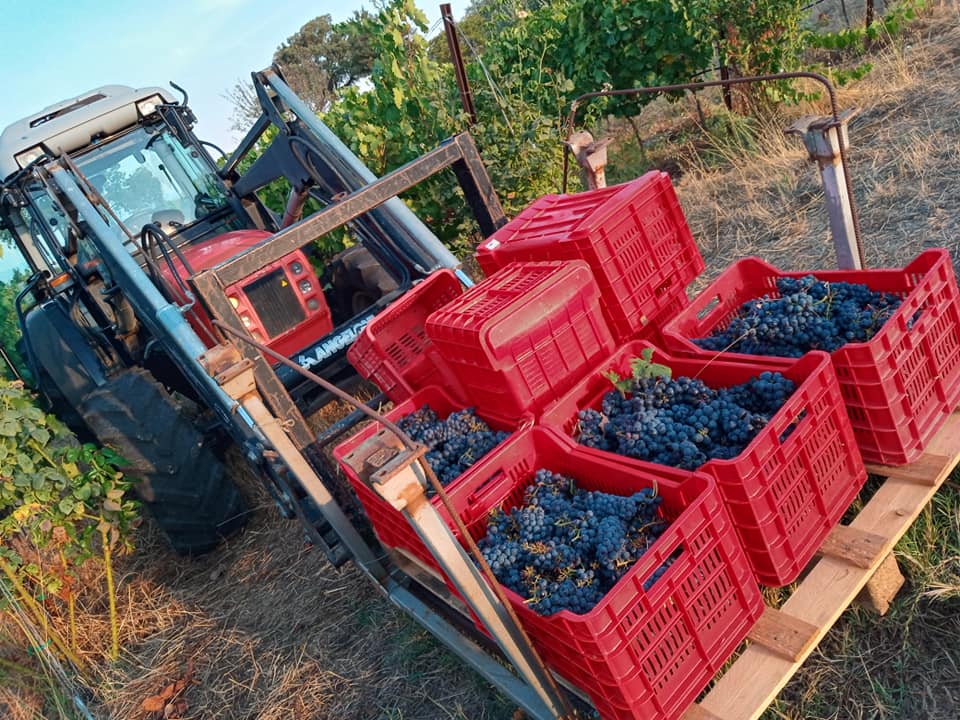
The History of the Sangiovese Grape, In the World and Tuscany

Sangiovese’s Origins and Global Spread
The Sangiovese grape can trace its origins back over 2,000 years, with some researchers suggesting it may have been cultivated by the Etruscans in Central Italy. By the Middle Ages, Sangiovese had become a dominant variety, mentioned in various agricultural treatises, reflecting its prominence in Italian vineyards.
Sangiovese eventually spread to regions beyond Italy, notably in countries like Argentina, Australia, and the United States, particularly California. However, the grape’s distinctive characteristics—bright acidity, firm tannins, and a complex range of flavors from cherries and violets to earthy herbs—make it best suited to the terroirs of Italy, where it truly thrives.
Sangiovese in Tuscany
Nowhere has Sangiovese grape made a greater impact than in Tuscany. The region’s soil, climate, and winemaking tradition are perfect for growing this versatile grape. It is the foundation of some of Tuscany’s most celebrated wines, including Chianti, Brunello di Montalcino, Vino Nobile di Montepulciano, and Morellino di Scansano.
Tuscany’s love affair with Sangiovese began in earnest in the 18th century when the grape became a core component of Chianti wines. Originally, Chianti was a blend of grapes, but in the 20th century, Sangiovese became the dominant variety, with modern Chianti Classico often made from 100% Sangiovese.
The development of Brunello di Montalcino in the 19th century further cemented Sangiovese’s reputation, with winemakers using a local clone of Sangiovese known as Sangiovese Grosso to craft one of Italy’s most renowned wines. In the Morellino di Scansano region, particularly in southern Tuscany near Maremma, Sangiovese takes on a robust character, influenced by the Mediterranean climate.
Sangiovese’s Global Appeal
Sangiovese’s global appeal lies in its versatility. While in Tuscany, it reaches its full potential in a range of styles from fresh, fruity wines to bold, age-worthy reds, in other parts of the world, Sangiovese has adapted to different climates and winemaking traditions. Its natural acidity and tannin structure make it a favorite among winemakers for blending as well.
Today, Sangiovese grape is an ambassador of Italian winemaking tradition, admired by wine lovers worldwide. Whether enjoyed in a rustic Tuscan villa or in a sophisticated urban setting abroad, the legacy of Sangiovese continues to flourish, symbolizing the history, culture, and excellence of Italian viticulture.
The story of Sangiovese is not just a tale of a grape; it’s a journey through time, geography, and innovation, deeply rooted in the heart of Tuscany and branching out across the globe.
Introducing Capricci, IGT Toscana Sangiovese
At Tenuta Le Mandorlaie, we celebrate the rich tradition of Sangiovese with our signature wine, Capricci. This IGT Toscana Sangiovese is crafted from 70-year-old vines in the heart of the Mandorlaie locality, where the unique terroir of Maremma brings out the very best in this storied grape.
Capricci is a full-bodied wine that reflects both the heritage of Sangiovese and our commitment to sustainable viticulture. Aged in oak barrels, it offers a complex flavor profile with notes of dark cherry, plum, and earthy undertones, balanced by vibrant acidity and refined tannins. Each bottle encapsulates the essence of the Maremma region, delivering a true taste of Tuscany’s winemaking excellence.
Whether enjoyed on its own or paired with a meal, Capricci is more than just a wine—it’s a tribute to the legacy of Sangiovese and the artisanal practices of our vineyard. We invite wine enthusiasts to experience the full expression of this ancient grape through Capricci, where tradition meets innovation in every sip.

